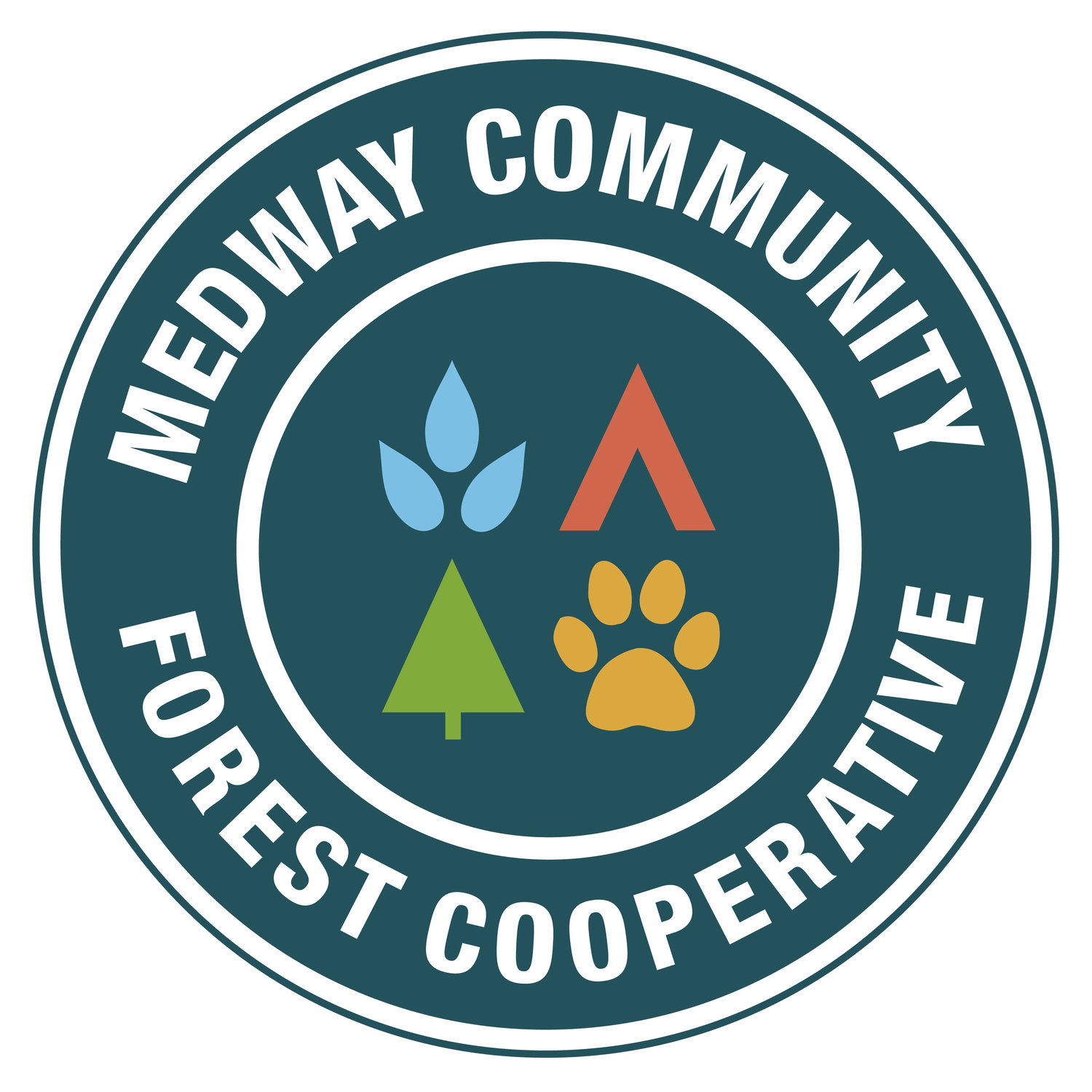An Introduction to Tree Marking
An Introduction to Tree Marking
Originally published January, 2016
Guest post by MCFC Board Member Tommy Lutz
Tree marking is a forest management technique used in forests around the world. It is as simple as its name – individual trees are marked in a forest stand before the stand is “treated”, or has some of the trees cut.
Tree marking is used in industrial forestry to ensure that forestry contractors who are using machinery to harvest wood are cutting the right trees to maximize the efficacy of a silvicultural treatment that has been prescribed for the stand by a forester. It also provides a monitoring opportunity, as the system provides an easy opportunity for auditing.
Tree marking, in its most basic form, consists of painting or using flagging tape to mark trees in 1, or more frequently, 2 colours. The first colour, often orange or yellow, is used to designate trees that are to be cut by the harvesting machine or sawyer who will be working in the forest stand. The second colour is used to mark trees that will be kept and should not be cut.
MCFC board member, Royce Ford teaches tree marking at a recent Best Management Practices for woodlot owners workshop (Photo: MTRI)
Marking trees to cut based on spacing is a way to reduce competition for resources between trees, and manage light on the forest floor. Managing light encourages the establishment and growth of desired tree regeneration. In this scenario, trees are marked to remove that will allow for the best, healthiest trees to remain spaced out at a distance that is specified in the silvicultural prescription.
There are as many reasons to mark a tree to be cut as there are to mark it to be kept. Some good reasons to mark a tree to be cut include defects that affect longevity, poor form that affect quality and value, and spacing to reduce competition for desirable trees and encourage regeneration. Defects are characteristics of a tree that make it unlikely to survive until the next time the stand is harvested. Conks on the tree are an indicator of rot and poor tree health; broken tops could be the result of ice or wind damage, as well as any number of forest pests; cankers are often an indicator or fungal or bacterial infection; small, unhealthy tops are also an indicator of tree stress and could be a reason to mark a tree to cut.
Poor form is seen in trees that are otherwise healthy but are not straight, easy to process trees. Some examples of poor form are sweep (a gradual curve in the trunk), crook (an abrupt curve or kink in the trunk), seams, and “wolf trees”. Keep in mind that there are also plenty of good reasons to keep some of these trees!
Acadian forest wolf tree (Photo: Maine Public Land Journal, 2009)
Marking trees to keep often involves a simpler decision making process. Much of this process has to do with wildlife features. In an industrial setting, there is a minimum requirement of wildlife trees marked per hectare. If a living tree has a good cavity where a bird or animal could make a nest those trees are often kept. This is especially true if the tree is alive and looks like it will persist for over a decade. Nest trees are also kept, and it is good practice (and sometimes a requirement) to leave a buffer of untouched trees in order to make sure that the inhabitants of the nest remain undisturbed. Trees that look unhealthy but are being used extensively by woodpeckers are also good candidates for retention. Mast trees (oak, beech, cherry) that are large and healthy are good to keep also as a wide variety of animals and birds use seeds, nuts, and berries as a food source. Beech trees with lots of claw marks from bear climbing to the top for beech-nuts are a nice feature to preserve.
Trees that are a desirable species, and are healthy, and look as though they would provide a good strong seed source for the future of the stand are also occasionally reserved from cutting, as are super canopy trees (trees that are noticeably taller than the rest of the trees in the stand, or have a broad extensive canopy such as “wolf” white pines). It is important to note that not every tree that has one of these features should be kept – as long as some of these features are represented in the remaining trees, many of them can be removed (with the exception of nest trees). It is important to remember that tree marking benefits the entire stand, if it is done according to the prescription. Leaving too many trees behind may not give you the stand level results that you desire!
Tree marking is a technique that is widely used in Ontario and is seldom used industrially in other provinces. However, it can be used effectively in Nova Scotia. It is especially complimentary to management on woodlots to improve overall woodlot health and release crop tress while retaining aesthetic values. So whether it is you yourself, or a forestry professional, tree marking can be applied to your woodlot. It is not only good for the forest, but it also provides a great excuse to get outside, and explore the woods and really get hands on with your trees!
If you're interested in learning more, check out the Ontario Tree Marking Guide.


